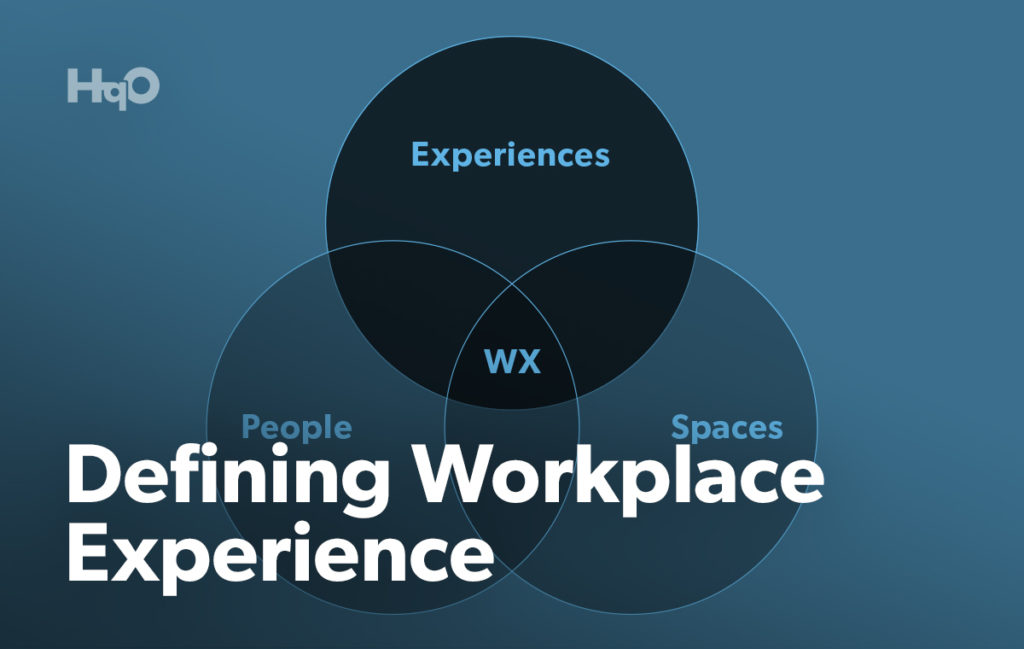What Makes a Building “Smart”?
If you’re a part of the commercial real estate (CRE) community, you’ve undoubtedly heard the term “smart building” countless times over the years. But what is smart building technology, and what are the specific smart building solutions you need? In short, smart buildings use technology to quickly disseminate information between building systems in order to optimize performance and create seamless, easy experiences for building occupants.
These tech-enabled buildings are desirable for tenants and visitors due to their modern and unique amenities, as well as their custom solutions for any need. Smart building technologies can work together to manage and control everything from a building’s lighting and HVAC systems to a building’s security. With so many ways to achieve results, smart building systems vary — there is truly no one-size-fits-all solution for how property teams can leverage technology in buildings to create efficiencies and enhance their tenant experience.
Smart building needs for the office sector align with recent CRE trends, such as the rapid adoption of technology, the need for more touchless experiences, and the ability to streamline communications in office buildings. The onset of COVID-19 has undeniably accelerated these trends, as it has dramatically changed where, when, and how people work.
Smart Building Statistics
There’s no doubt that the demand for smart building services has rapidly grown in recent years. Don’t believe us? Let these smart building statistics speak for themselves:
- The global smart building market was valued at approximately $7.0 billion in 2014 and is expected to reach approximately $36 billion by 2020.
- Over the course of the next five years, over 75% of new construction will involve at least one facet of IoT and/or related smart building technologies.
- In 2016 alone, the revenue of commercial and institutional smart building systems worldwide reached almost 15 billion U.S. dollars.
Evidently, there are various factors that contribute to the exponential growth of the smart building market. However, two of the most prominent concerns in the office sector revolve around the adoption of technology to create more streamlined tenant experiences, as well as the crucial role that the industry plays in energy efficiency.
The commercial real estate industry is one of the biggest offenders of leaving a massive carbon footprint, due to not always complying with environmental social governance. Fortunately, smart building technologies play a key role in energy conservation: they save energy by automating controls and optimizing systems. An ACEEE report found that a building with integrated smart building systems can realize 30–50% in savings versus existing buildings that are otherwise inefficient.
One of the most important smart building technologies is the Internet of Things, or IoT. As defined in a Deloitte report, the IoT is a suite of technologies that equip devices and locations to generate all kinds of information — and to connect those devices and locations for instant data analysis and “smart” action. For instance, without IoT, you can’t use your phone for mobile access through a locked door without technology connected to the door that allows it to be unlocked in that manner.
Thus, IoT technologies for the office play a key role in the creation of smart building solutions. With the proliferation of internet connectivity throughout a property and the availability of the necessary integration layer, tenant experience software’s value proposition is far richer than in the past.
Smart Building Technology Examples
There are various types of smart buildings that have taken the stage globally. Here are some examples of the types of smart building technologies you can find in smart buildings around the world:
- Building Information Modeling: Building Information Modeling (BIM) is an intelligent 3D model-based process that records and displays the physical and functional characteristics of a facility. It has primarily been utilized by architecture, engineering, and construction professionals, but has recently become more widespread within the facilities management context. Among their extensive product list, Switzerland-based company ABB offers BIM tools that conform to industry standards and receive data from other ABB equipment. This example of smart building technologies plays a key role in future opportunities for better space utilization and increased building efficiency. An ABB smart building would likely be maintained through BIM processes.
- Artificial intelligence: The applications of AI within smart buildings are extensive because AI is easily integrated with IoT sensors and devices. Artificial intelligence devices apply deep learning to hierarchically understand objects and environments, making adjustments according to learned user preferences. Based in China, technology company Huawei is harnessing the power of artificial intelligence to create countless technology solutions. In particular, the Atlas AI computing platform unlocks unparalleled computing power with their all-scenario AI infrastructure solution, paving the way for smart buildings and cities in the future. A Huawei smart building would undoubtedly include the use of AI capabilities.
- Building automation: Infrastructure that allows for centralized control of a building’s HVAC, lighting, security, and other systems encompasses modern-day building automation. U.S.-based SBS smart building solutions offers a variety of solutions in the area of building automation: their HVAC control and management systems help clients move towards 100% open non-proprietary technology solutions. Their integrated security systems leverage card access, IP video, and other integrations to deliver intuitive web and mobile based security solutions for our clients. These are just some of the smart building technology examples that SBS addresses with their solutions.
Smart Building Ideas for Your Office Portfolio
HqO’s growing Marketplace of best-in-class technology partners can help aggregate numerous smart technologies for your office building. Through its operating system, landlords and property teams can activate HqO partner capabilities to meet any building’s needs. HqOS™ smart building technology examples fall under the following categories:
- Access Control: Security is among the most notable solutions in a smart building using IoT. Through the HqOS integration with Openpath Security’s access control capabilities, owners can enable tenants to gain access to their offices with just the tap of a phone.
- Order Ahead: A smart building application can increase safety and convenience for your tenants, such as integrating with local retailers like sweetgreen outpost to allow them to place orders ahead and reduce friction.
- Resource Booking: Smart building technologies have also made resource booking even more seamless. Smart building sensors coordinate with your existing software to assist in more efficient room booking management, from conference rooms to event spaces and everything in between, making organizing your day a seamless process.
- Shuttle Tracking: Smart building software solutions have also made daily commutes even more seamless. Shuttle tracking technologies via HqOS partner TransitScreen can help you understand your tenants’ commuting behaviors and determine the best-fit transit solutions for any property.
Smart building ideas — and the solutions that come with them — are here to stay in the future of commercial real estate. These types of smart building ideas can not only ensure that buildings themselves run more efficiently through frictionless experiences, but also bridge the digital and physical worlds in a climate where the modern tenant experience must support tenants wherever they are located.
Learn more about HqO’s growing technology ecosystem, and find out how our partner technologies can work together to help you achieve smart building solutions for your portfolio by scheduling a demo today.




